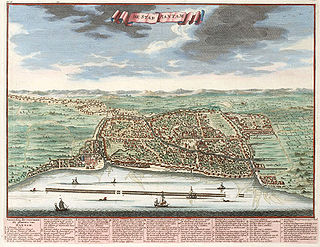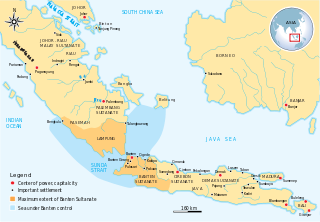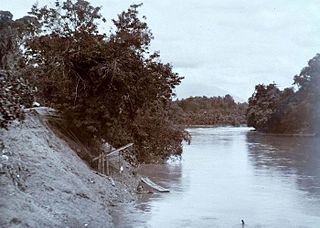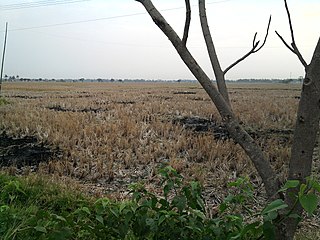
Banten is the westernmost province on the island of Java, Indonesia. Its capital city is Serang and its largest city is Tangerang. The province borders West Java and the Special Capital Region of Jakarta on the east, the Java Sea on the north, the Indian Ocean on the south, and the Sunda Strait on the west and shares a maritime border with Lampung to the west. The province covers an area of 9,352.77 km2 (3,611.12 sq mi). It had a population of over 11.9 million in the 2020 census, up from about 10.6 million in 2010. The estimated mid-2023 population was 12.308 million. Formerly part of the province of West Java, Banten was split off to become a province on 17 October 2000.

Banten, also written as Bantam, is a port town near the western end of Java, Indonesia. It has a secure harbour at the mouth of Banten River, a navigable passage for light craft into the island's interior. The town is close to the Sunda Strait through which important ocean-going traffic passes between Java and Sumatra. Formerly Old Banten was the capital of a sultanate in the area, was strategically important and a major centre for trade.

The Ciliwung is a 119 km long river in the northwestern region of Java where it flows through two provinces, West Java and the special region of Jakarta. The natural estuary of the Ciliwung, known as the Kali Besar, was an important strategic point for trade in the precolonial and colonial periods and was instrumental in the founding of the port city of Jakarta, but has been lost from a reorganization of the watercourse of the rivers around the area into canals.

The Solo River is the longest river in the Indonesian island of Java. It is approximately 600 km (370 mi) in length.

The Banten Sultanate was a Bantenese Islamic trading kingdom founded in the 16th century and centred in Banten, a port city on the northwest coast of Java; the contemporary English name of both was Bantam. It is said to have been founded by Sunan Gunungjati, who had previously founded Cirebon.

The Cisadane River is a 138 kilometres (86 mi) long river in northern West Java, Indonesia. Note that the prefixed syllable "Ci" means river, so to avoid tautology the true translation is "Sadane River". The river has its source at Mount Pangrango and passes through Bogor and Tangerang before flowing to the Java Sea.

Benteng people are a Chinese Indonesian community of 'Peranakan' or mixed descent, native to the historic Tangerang area in the modern-day Indonesian provinces of Jakarta, Banten and West Java.

The Angke River is a 91.25-kilometre (56.70 mi) long river in Jakarta, Indonesia. The river flows from the Bogor area of West Java, passing through the cities of Tangerang (Banten) and Jakarta into the Java Sea via the Cengkareng Drain. The river is connected with the Cisadane River by the Mookervaart Canal.
Tanara is a district in the Banten province on the island of Java, Indonesia.

The Ci Banten, or Ci Peteh, is a river in Banten province on the island of Java, Indonesia.

The Ciujung is a river in the province of West Java and Banten on the island of Java, Indonesia.

Pontang is a district in the Banten province on the island of Java, Indonesia.
The Ci Manceuri, or Cimanceuri, is a river in the Banten province of western Java, Indonesia.

Mount Halimun is a mountain in the island of Java, Indonesia. It is protected by the Mount Halimun Salak National Park. It is Banten's highest point.

The Mookervaart River is a canal connecting the Cisadane River in Tangerang and Kali Angke in Jakarta. Constructed from 1678 to 1689, this 25–30 meter wide channel is one of the important flood control water channels in Jakarta.

The Tulang Bawang River is a river which mostly flows in Lampung, Indonesia. The river lends its name to the Tulang Bawang Regency, where it reaches the Java Sea and the West Tulang Bawang Regency. It also flows across the capital of the regency at Menggala.

Bantam Residency, sometimes spelled Banten Residency, was an administrative division (Residency) of the Dutch East Indies which existed from 1817 to 1942; it was located at the western point of Java and its capital was at Serang. Its borders largely correspond to the present-day Indonesian province of Banten.



















